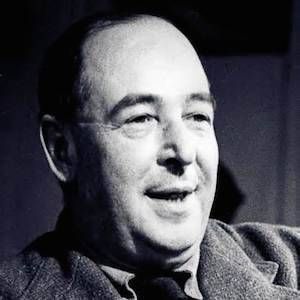
Reading Pathway: C.S. LEWIS

Lewis’s work is remarkable not only for its clarity and insight into the human condition, but its breadth. During his sixty-four years Lewis wrote poetry, fantasy and science fiction, academic and popular nonfiction, essays, and more, so it’s difficult to choose just three books to start with. My reason for picking these particular books is because each one reflects a key period of Lewis’s life–his literary childhood, his conversion to Christianity and subsequent rise to fame, and the years leading up to his death.
I. The Lion, the Witch and the Wardrobe

Lewis’s friend and colleague J.R.R. Tolkien thought the Narnia series lacked depth. Though the series heavily reflected his childhood flights of imagination, it is highly probable that Lewis imbued what could have been a simple children’s fantasy with a symbolism that Tolkien missed. Scholar Michael Ward posited in 2008 that each Narnia novel corresponds to one of the seven planets in the medieval understanding of the universe. 2 Lewis’s longstanding fascination with medieval symbolism and mythology supports this theory.
II. Mere Christianity
World War II brought with it a renewed interest in religious matters in Great Britain. As a result, the BBC hired Lewis to give a series of broadcast talks to address the spiritual concerns of the British people. These broadcast talks were later published in three volumes–Broadcast Talks (1942), Christian Behaviour (1943), and Beyond Personality (1944). Though interconnected, they were viewed by the general public as separate works, so Lewis combined and amplified them to create Mere Christianity, published in 1952.
Mere Christianity is Lewis’s seminal evangelical work–a logical argument for the Christian faith and a call for peace and cooperation between the various denominations therein. Many apologetic works have been based on it, and it’s probably Lewis’s best-known work after The Chronicles of Narnia. The broadcast talks were what catapulted Lewis to fame in England, and the publication of Mere Christianity spread his fame to America.
III. A Grief Observed

Lewis was notoriously uncomfortable with expressing sentimentality in his writing and took great pains to disguise his authorship of A Grief Observed when it was published. He used a pseudonym and altered his usual writing style to avoid detection. Even so, T.S. Eliot, then a director at the publisher Faber and Faber, recognized the manuscript’s author immediately.
Once you’ve finished these three books, you’ll have a basic idea of who Lewis was as a writer. Obviously you should read everything he’s ever written, but a couple of good follow-up books to start with are The Screwtape Letters, a novel written as a series of letters between a demon and his protégé, and C.S. Lewis–A Life by Alister McGrath. The latter is an excellent biography that gives a wonderful overview of his life and insight into his works.
_________________________
1I personally recommend reading the books in the order they were written or published. As Alister McGrath points out in C.S. Lewis: A Life, “The chronological approach raises considerable difficulties for readers. For example, the events of The Horse and His Boy actually occur during, not after, those of The Lion, the Witch, and the Wardrobe.”
2For a layman’s overview of this theory, read The Narnia Code: C.S. Lewis and the Secret of the Seven Heavens. For an in-depth scholarly analysis read Planet Narnia: The Seven Heavens in the Imagination of C.S. Lewis, both by Michael Ward.

















